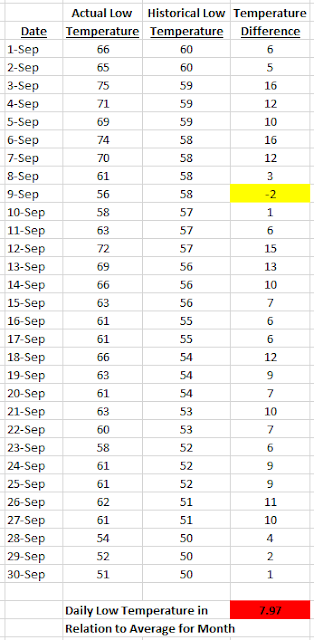Ah, October, a month we look forward to, as the heat and humidity of the summer are finally replaced by crisp, cool mornings, and some of the best golfing conditions of the year. Or, at least that's the way it's supposed to work...
It truly feels as if a book could be written about the weather we've experienced in 2018. Two weeks ago, the Philadelphia region hit its annual rainfall average--and we've had over 4" of rain since then. Yes, there definitely have been countless days this year that were neither good for playing golf, nor for maintaining the golf course.
In addition to abundant rainfall, we have also had some crazy temperatures the past several weeks. However, in this case, we're not talking about extreme daytime high temps, but instead, the nighttime lows. Going way back to August 27, we have had exactly one single night that hit the average low temperature. Stop and think about that for a second--that is only one day out of the last 40+ which has been "normal" by this measure.
Through the entire month of September we averaged close to eight degrees above average at night. The normal low is now 47 degrees, and we have not come close to that. As you can see below, the lone "cool" night occurred on September 9.
While people may only consider nighttime temperatures when deciding to turn the A/C on or off, if you're a grass plant, what happens at night can be just as important as what happens during the day. What do these extended warm nights mean for the turf? Well, with the persistent humidity, moisture, and warm soil temperatures we’ve continued to experience, a lot of the bad actors that
have usually packed their bags for the year, are sticking around.
On the turf disease area, we have seen more Gray Leaf Spot
in the rough this year than ever before. With regard to insects, the Annual Bluegrass Weevil is still active, causing damage to some areas of Bentgrass. And annual weeds have continued to germinate and grow vigorously.
 |
| The Annual Bluegrass Weevil has moved on to Creeping Bentgrass. |
It used to be that if you made it to August 15 without issues on the course, you were
over the hump. Now, we are into October and still have the fans running around several greens. We can only hope that it won't be long before we finally see some frost on the pumpkin.









